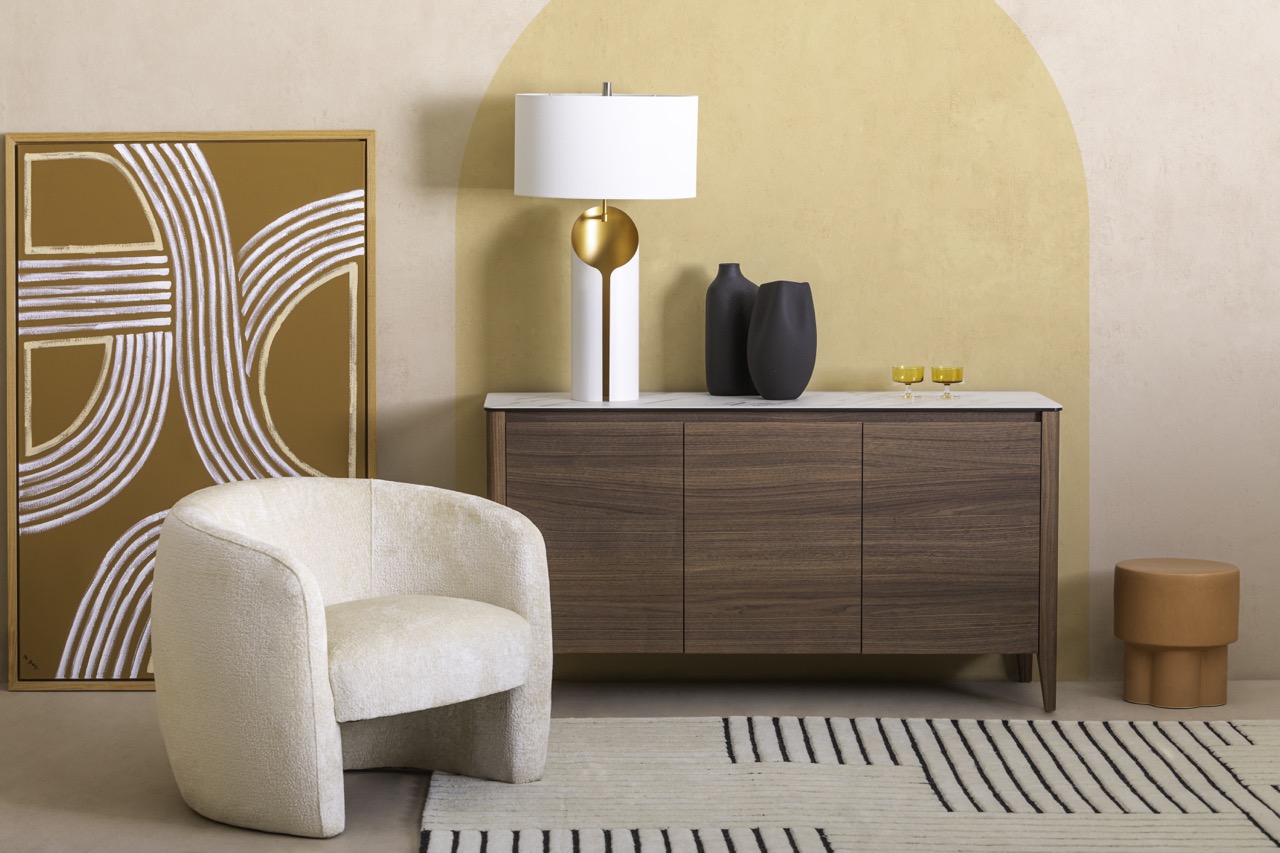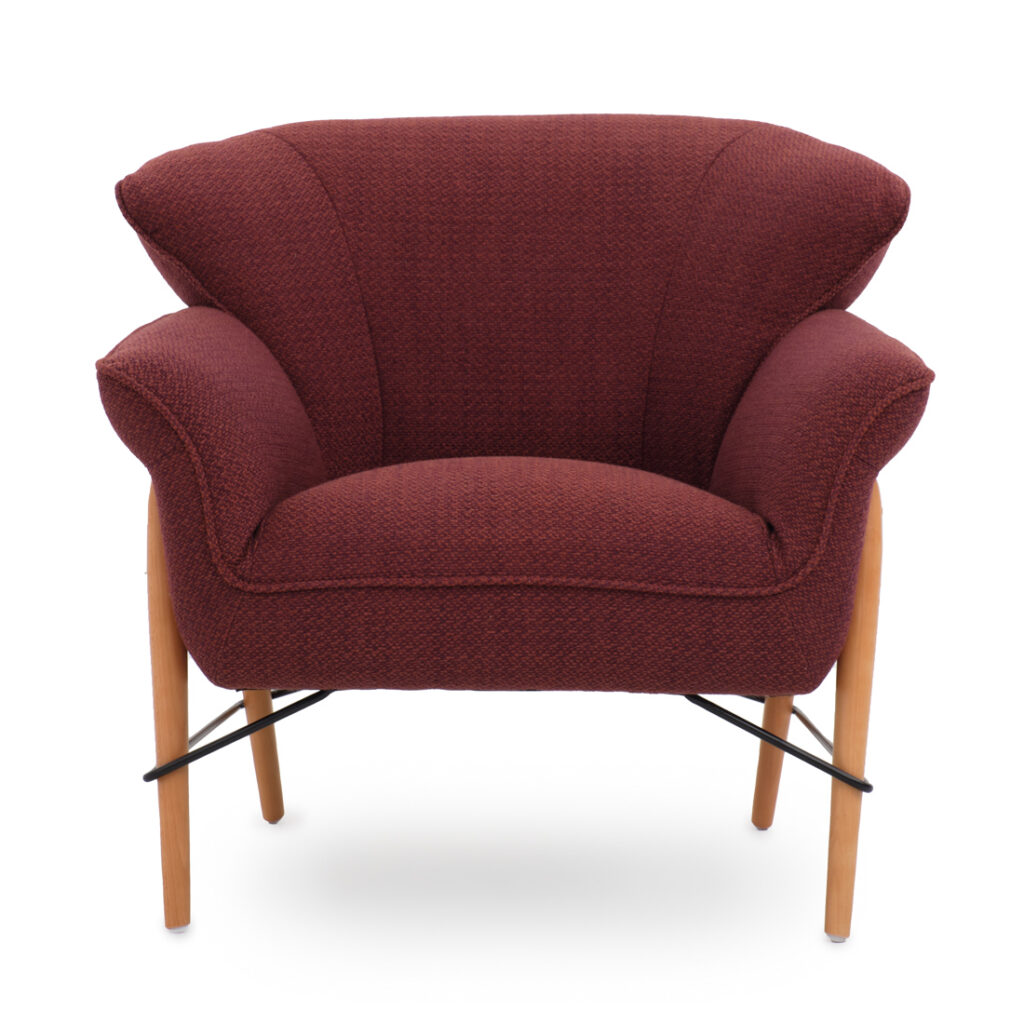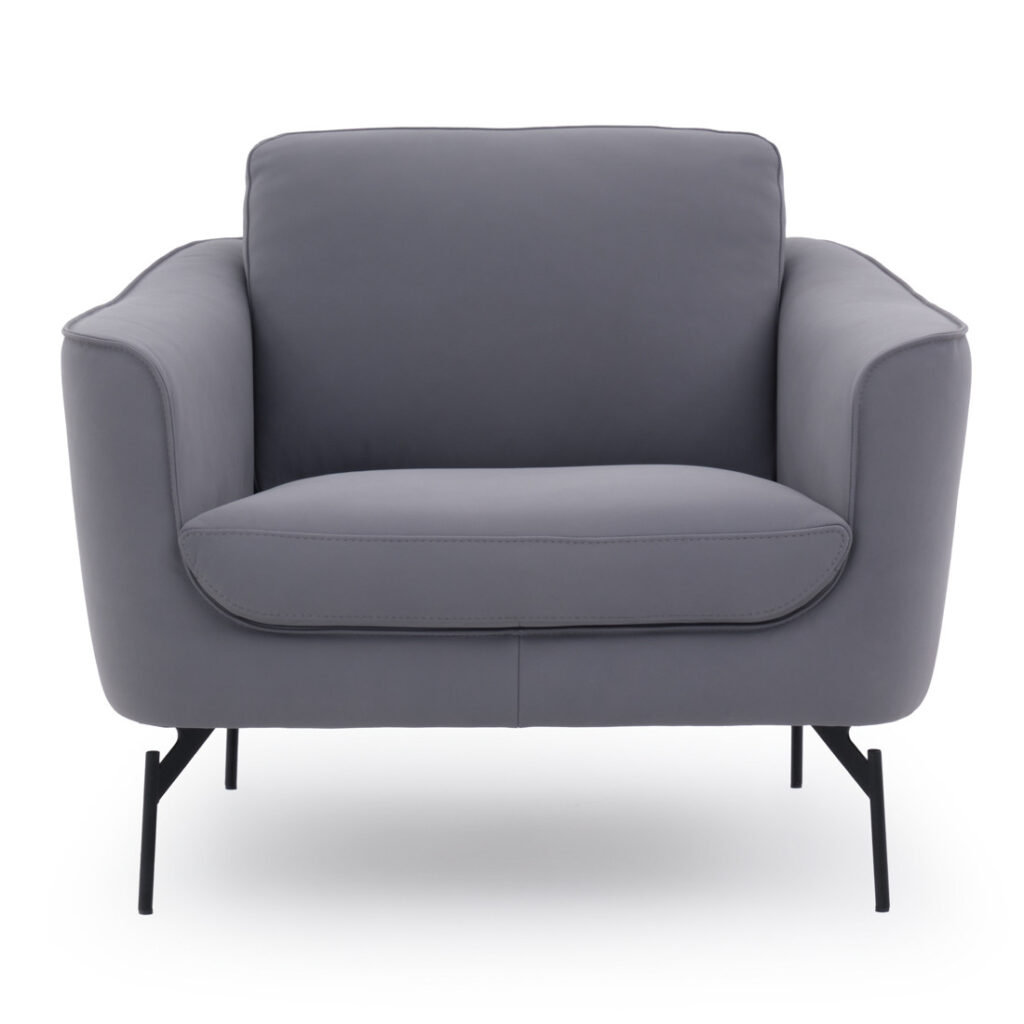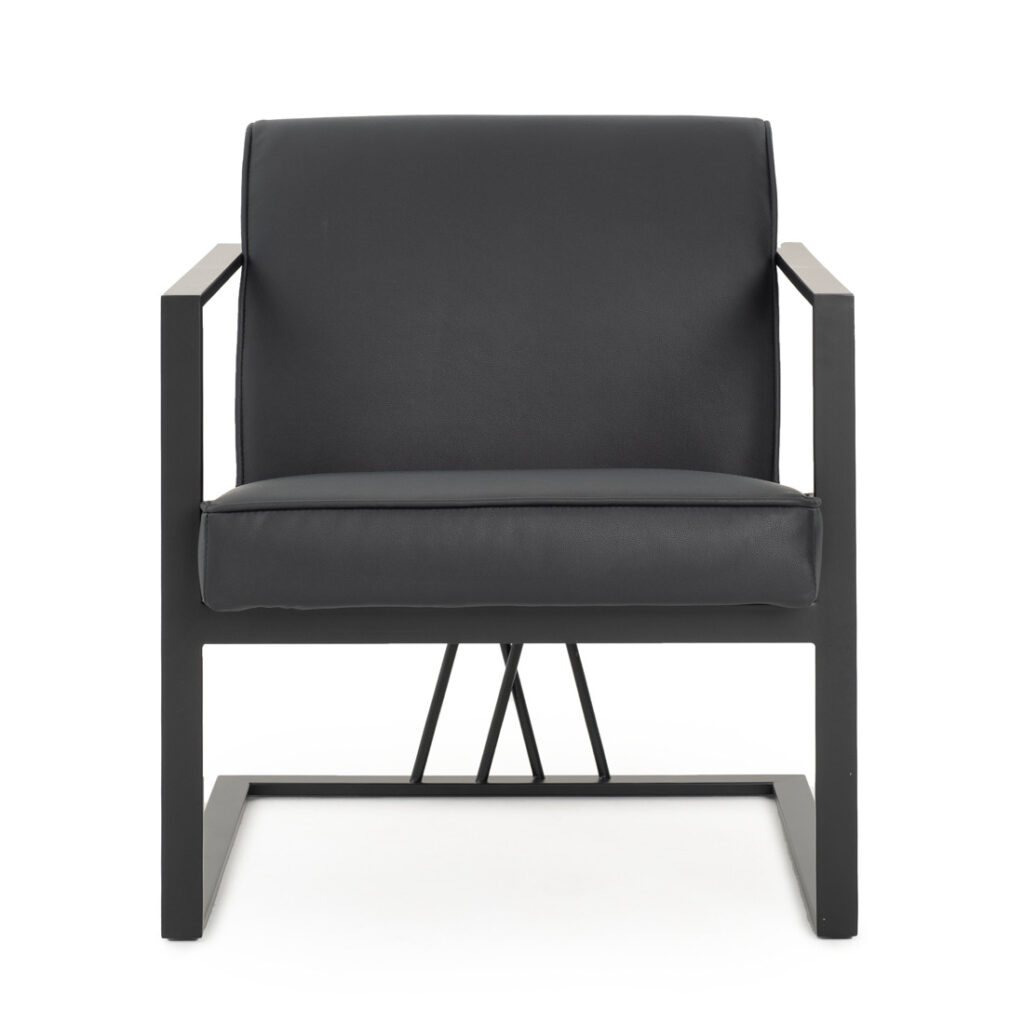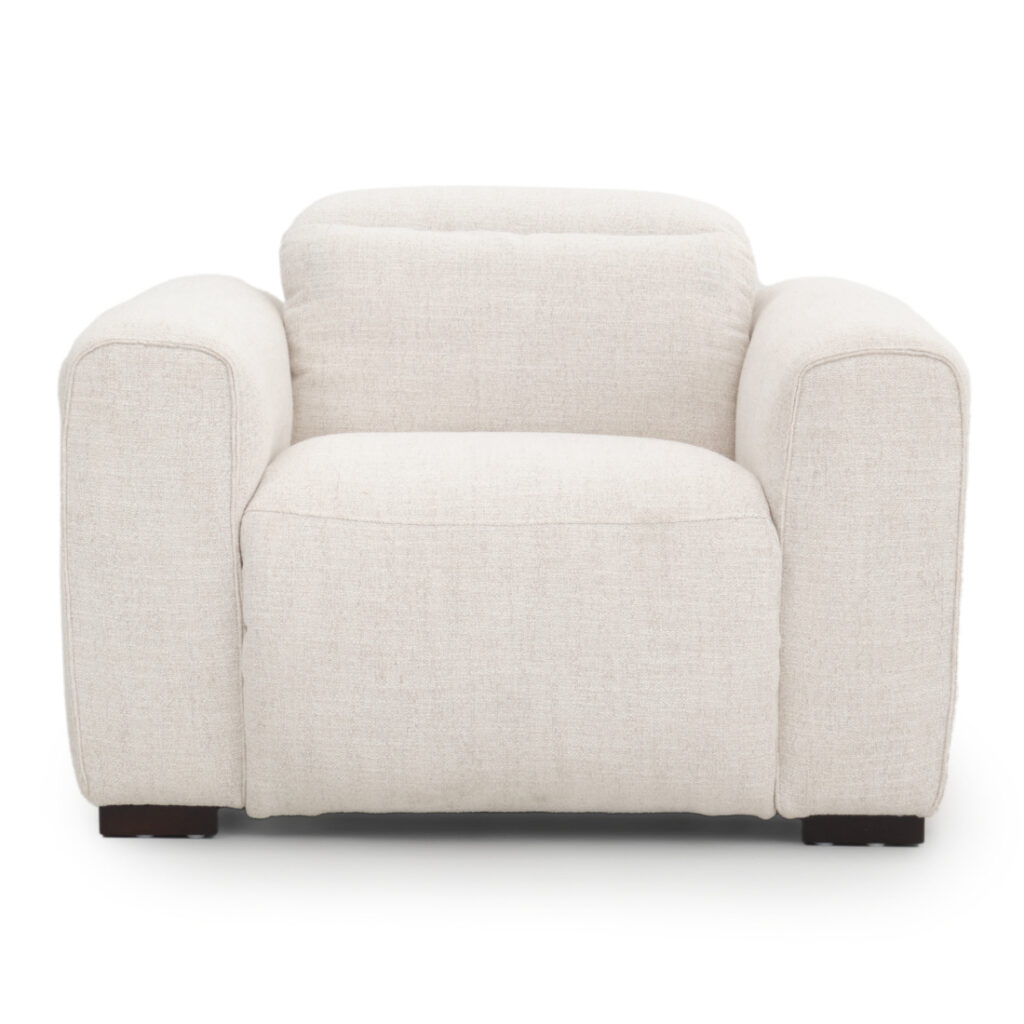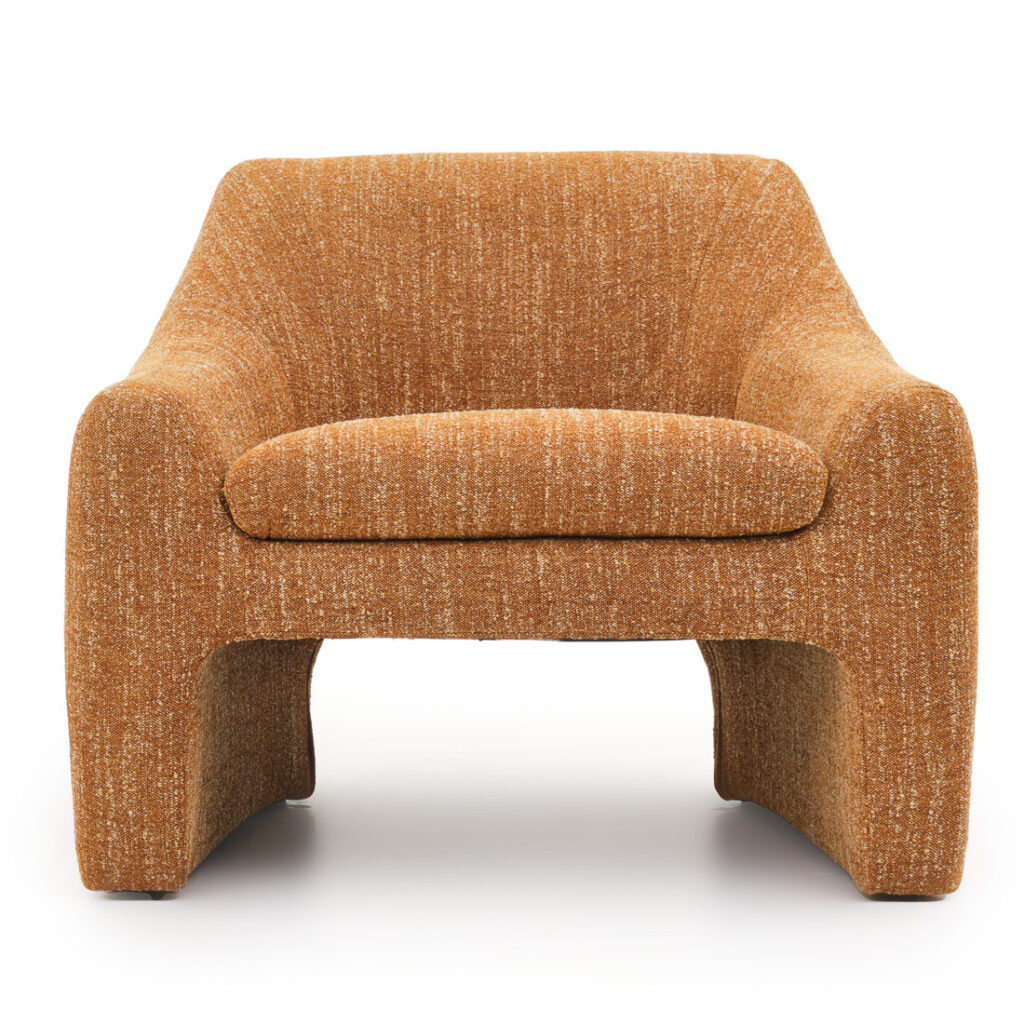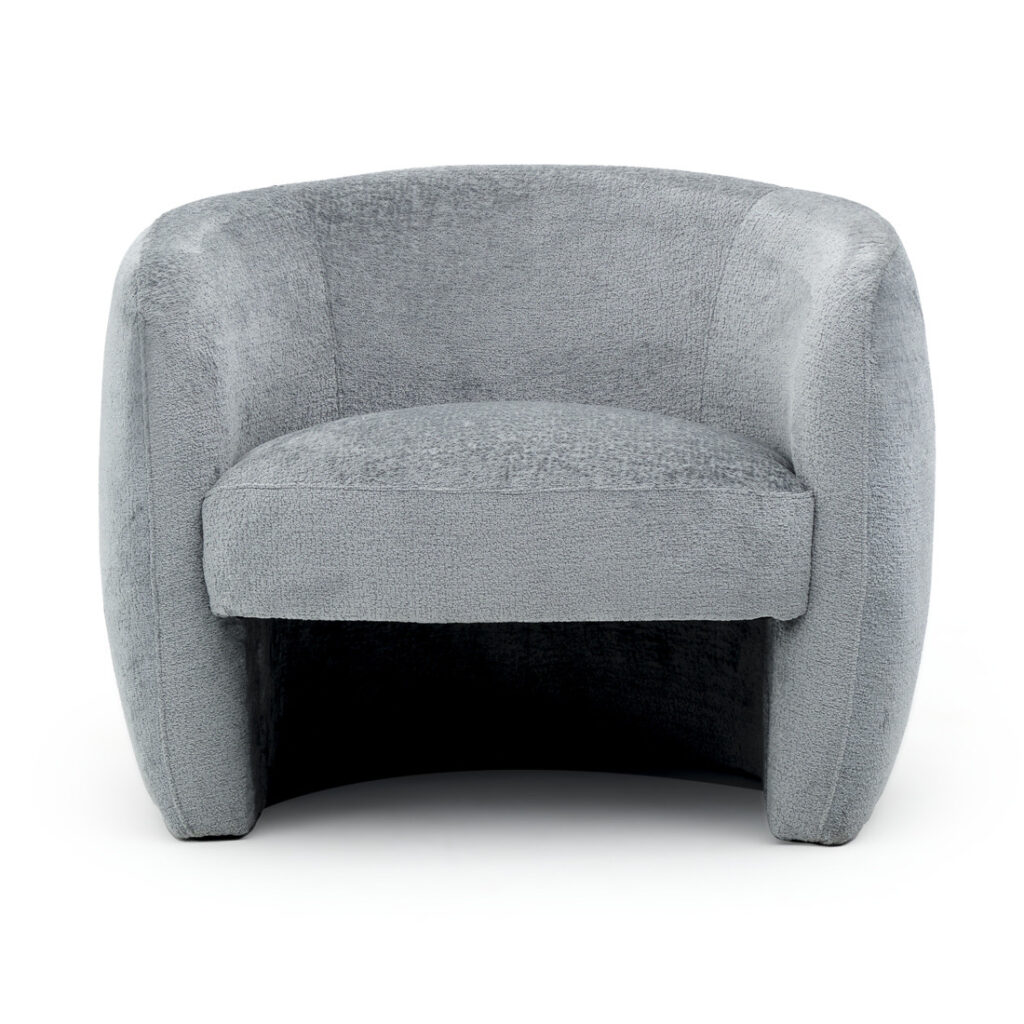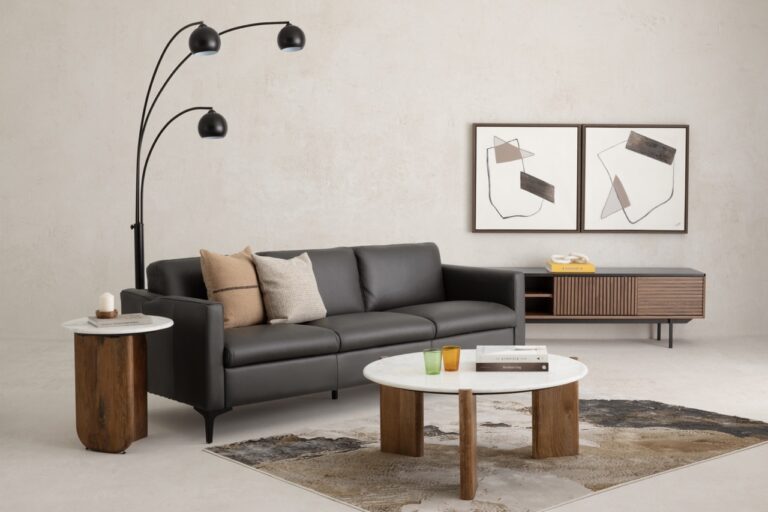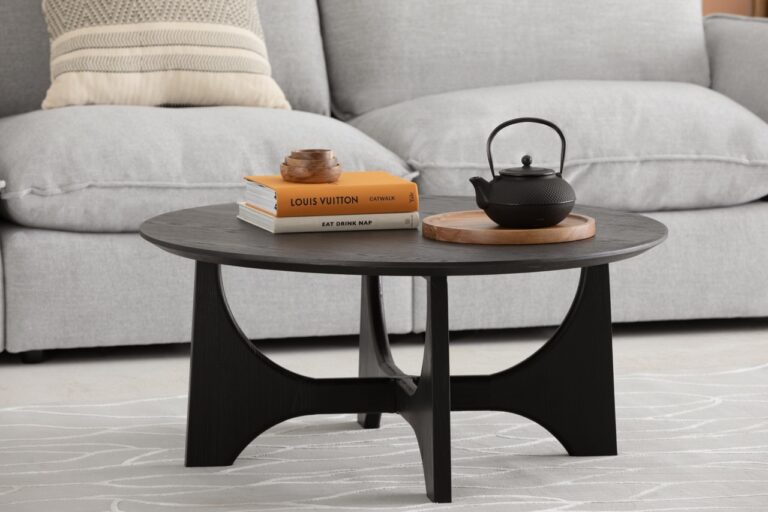What will the accent chair be used for?
An accent chair isn’t just extra seating; it’s a style statement. Sometimes the choice is between its visual appeal or practical use – a subtle but impactful decision.
Start with the practicality: assess the primary function of your furniture.
For a living room designed for engaging conversations, prioritize comfort. The Everly chairs, crafted in full-grain genuine leather, provide a welcoming and relaxed seating experience.
Meanwhile, an accent chair designed for dining should match your table’s height and be easy to clean, making it an ideal choice for accommodating an additional guest at meal times.
Accent chairs excel at revitalizing underused areas. They can turn a simple windowsill into a cozy reading nook or enhance a stairwell wall, infusing charm into these often overlooked spaces.
If the chair mainly plays a decorative role, focus more on its colour and shape than its practicality. Dare a bold design like the Wimar fabric chair with elegant, clean lines that offer a fun nod to the 1960s. Or look for ingenious details that stand out, such as the contrasting festoon stitch seams of the massive Wrenley chair.

What style of accent chair to choose?
Selecting an accent chair offers various stylistic paths. Choose one that complements the room’s existing style for a subtle, integrated look.
Alternatively, a chair with a contrasting design can become a striking visual centrepiece. For a balanced approach, a neutral accent chair can be enlivened with colourful throws and cushions, creating a blend of subtlety and flair.
For instance, the Sunki chair, with its solid ash wood, beige synthetic leather, and graceful curves, complements the serene simplicity of Scandinavian decor. In contrast, the Wilton chair, with its plush rust-coloured fabric and bold square shape, can add a dramatic, eye-catching element to your space.
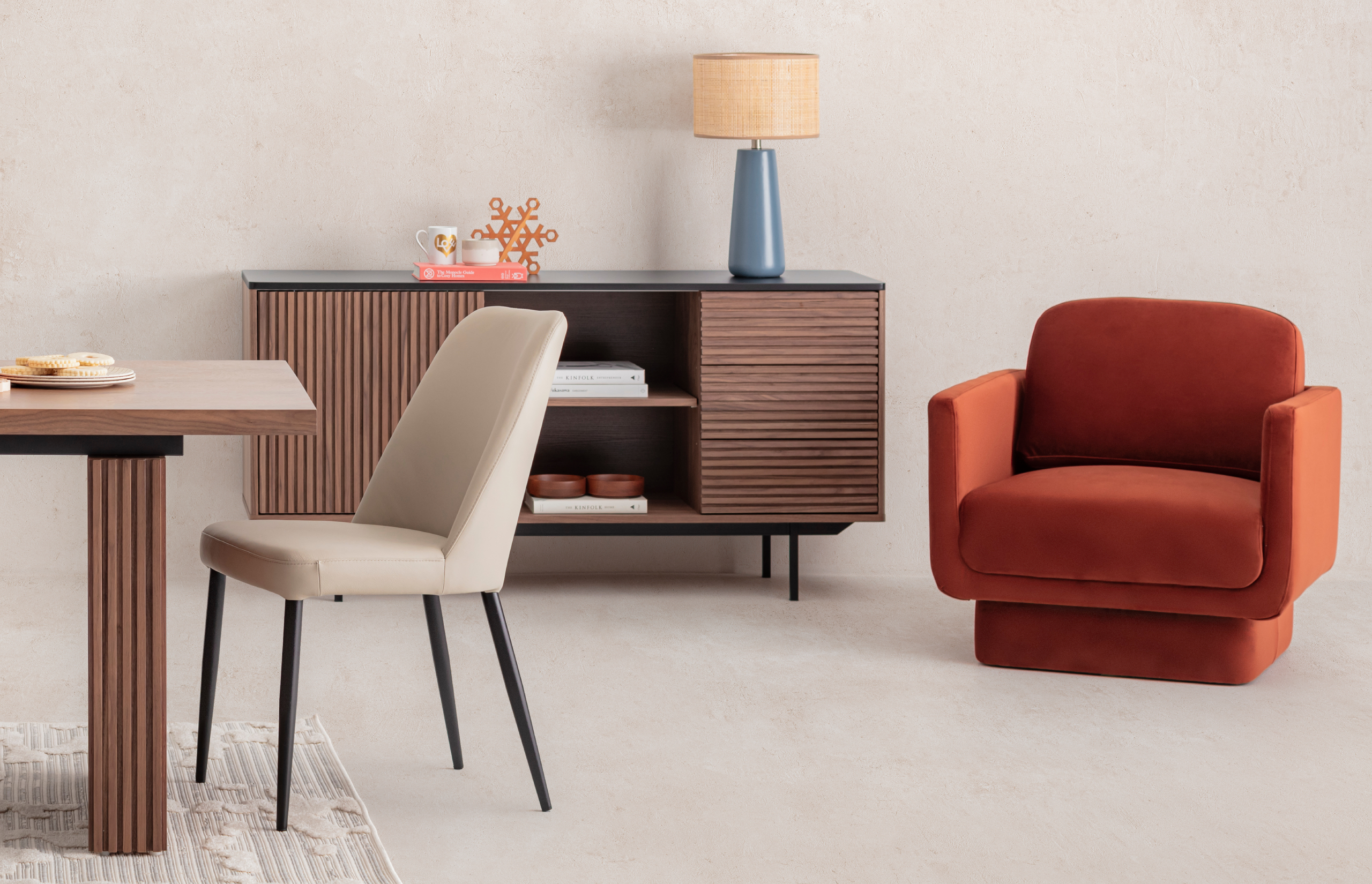
Since an accent chair primarily serves as a decorative highlight, it offers more room for creative experimentation compared to essential furniture pieces. Embrace this opportunity to play with styles and enjoy the process!
What colour should you choose?
In this realm of choice, an accent chair can either echo the prevailing colours and materials of your space or boldly defy them.
For a cohesive look, consider an upholstery shade that’s a nuanced variation of the room’s primary colour. In settings with white, beige, or light grey walls, the Estro‘s distinctively patterned, textured fabric is a stellar pick.
Alternatively, a neutral-coloured chair in white, grey, beige, or black can fit seamlessly into various decors. Here, opt for a design that stands out, like the Walt model‘s sleek, polished chrome legs and arms.
If making a statement is your goal, select a chair in a vivid colour that already exists in the room but in a lesser role. Use accessories like throws, rugs, cushions, decorative items, or art for inspiration. Experiment with bold choices like a yellow or orange Norika armless modular chair or an Elryn barrel seat in a warm, retro-styled room. Or, fall for the playful allure of a Wess chair in pink or turquoise velvet, adding a touch of whimsical comfort.
Accent chairs come in all sorts of colours
Assessing your space: How much room do you have?
Your accent chair needs to fit the room’s size and complement the existing furniture. A chair that’s too large can overwhelm the space, while one that’s too small may seem lost in a larger room. It’s important to maintain enough clearance around the chair for ease of movement.
To visualize this, try marking the floor with removable tape or temporarily placing a similarly sized chair from another room in the spot. This approach, along with Mobilia’s sizing tool, can help you confidently choose the ideal accent chair for your space.
Slide the arrows of the sizing tool so that it automatically sorts accent chairs of corresponding width and height. Then arrange and decorate the room to your taste, as explained in the video below.
Do accent chairs have to match the sofa?
Modular sets often come with a coordinating accent chair, which is a reliable choice, particularly if it’s intended for similar use. For those seeking a contrasting look, opt for a chair with a seat height close to your sofa’s — roughly 4 inches difference — to maintain unity. Choose a chair that shares at least one feature with your primary furniture, be it colour, material, or overall style, to create a harmonious yet distinctive setting.
Explore the vast array of armchairs and accent chairs at your disposal. Consider the furniture’s purpose, the desired style, room colours, and the space you have. This will guide you to the ideal choice, enhancing both the beauty and functionality of your space.

